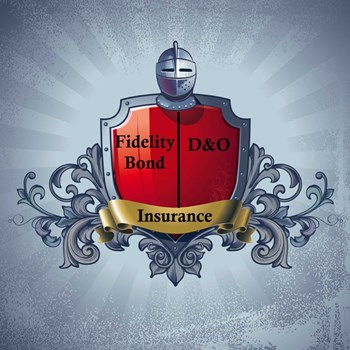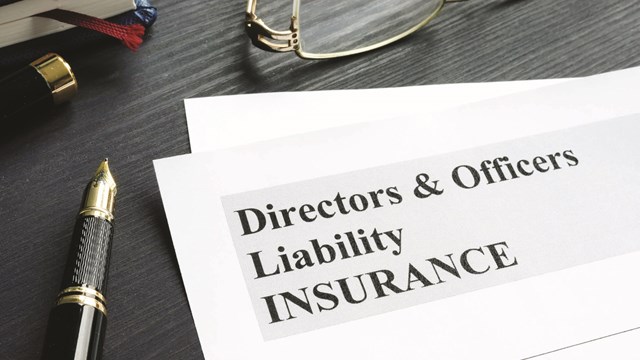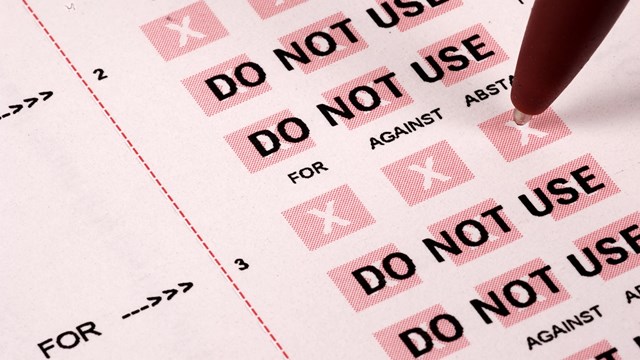
Ahhh, lawsuits. People suing people. Companies suing companies. People suing companies. Residents suing boards. A quick surf of the Internet and you can find many instances across the country where condo boards are sued. You can also find multiple lawsuits in which boards are sued for possible misappropriation of funds. Lawsuits are scary and potentially financially damaging—but the good news is that there a special insurance—called directors and officers liability insurance—just for boards that protects them against this possible litigation.
“D&O insurance is liability coverage to protect trustees against claims brought as a result of their failure to carry out their fiduciary obligations,” says Jeff Grosser, vice president and partner of Rodman Insurance Agency, Inc. in Needham, Massachusetts. “The policy provides coverage for defense costs and/or settlements resulting from those claims. The more comprehensive D&O liability policies include the managing agent as additional insured and provide coverage for both monetary and non-monetary damages as well as employment-related claims.”
Joel Meskin at McGowan Program Administrators in Fairview Park, Ohio, says that to understand D&O insurance, think of a puzzle. “The community association insurance puzzle is made up of a number of policies,” he says. “The genesis of the D&O coverage is to provide two protections: First, to defend a claim. Second, if the board member, the board or the association is found liable by judgment or a settlement is determined to be appropriate, to pay those amounts on their behalf.”
Directors & Officers Insurance
Is D&O insurance required? “Condominium documents usually provide that the board of trustees will obtain liability insurance that covers the trustees, i.e. D & O coverage,” says Michael Phillips, chief operating office at The Copley Group in Boston, which manages about 20 associations representing nearly 2,000 condominium units in Eastern Massachusetts. “Minimum amounts are usually specified and the documents usually empower the board of trustees to obtain such other insurance as they consider necessary.”
But this isn’t always the case. “The ‘Insurance Section’ of the condominium bylaws does not always specify that the board must carry D&O liability coverage specifically,” says Grosser. “However, there are typically requirements with regards to the scope of property coverage and the need for other coverages including General Liability, Crime, Workers Compensation and Flood. Crime coverage protects an association against the dishonest acts of its trustees and/or its managing agent (if added by endorsement). The coverage is required by both mortgage lenders and Massachusetts condominium law.”
Peter Ferraris Jr., president of Tooher Ferraris Insurance Group in Wilton, Connecticut, says that without a Directors & Officers liability contract, “with substantial limits of at least $3 million, a potential purchaser of a unit, or a bank entertaining the granting of a mortgage will decline if there is a pending Directors & Officers liability suit,” he says. “In addition, a judgment against an association from a D&O liability suit, may result in the liening of the individual unit.”
Since board members are volunteers, Ferraris says that without Directors & Officers liability coverage it would be impossible to get a unit owner to consider becoming a member of an association board. “D&O suits are very expensive to defend,” he explains. “Defense often represents 50% to 70% of the total cost of the lawsuit.”
Phillips says that he’s seen it firsthand where a candidate for a board seat is not willing to run because of concerns about liability. “But usually the combination of insurance and the indemnification of the condominium association and unit owners is enough to make everyone comfortable,” he says. “Also, frankly, I think a lot of candidates for a board position don’t even think about it.”
Insurance costs can be pricey and, in hard economic times, it’s often the first thing to go in an individual’s budget. But the cost of D&O insurance is relatively affordable for associations and shouldn’t be redlined from the budget. According to Ferraris, primary D&O liability contract limits are $1 million. “The cost of D&O for a 100-unit complex would be approximately $787,” he says. “Umbrella coverage should be purchased to increase the primary limits. Limits of $5 million to $15 million should be considered. The cost for a $15 million umbrella for a 100-unit complex would be approximately $1,000.”
Some boards will do without it—but the cost of savings from not having D&O insurance is nothing compared to the financial damage of a lawsuit. “Primarily, the association becomes self-insured and will have to defend and indemnify the association out of its own pocket,” says Meskin. “This is why saving a few hundred dollars, or even a few thousand, on a cheaper policy makes no sense, because the association just becomes responsible for the absence of coverage. If the association or its members cannot cover these amounts, the individual board member who has a judgment against him or her is personally liable and the judgment can be executed against him or her.”
What About the Manager?
But don’t assume that a D&O policy covers everything. Situations that aren’t covered are mold claims and construction defect claims. “One unique feature is that some of the D&O policies, although they will not pay settlements for breach of third party contract (i.e., breach of contract actions by vendors), they will defend the claim,” he says. “This is also the case for a claim arising out of a challenge to a board decision involving the procurement or maintenance of insurance. Many D&O policies provide coverage for the independent community manager or management company, but what the D&O policies do not cover is when the association itself, or the board or other insured sues the community manager. That is why the community needs its own error and omissions policy.”
Most management contracts indemnify the property manager against almost everything, except for matters where the management company is negligent or grossly negligent. “So even if the lawsuit names the management company, the D & O coverage would apply, since the condominium association is liable under their contractual indemnification of the management company,” says Phillips.
“Boards of directors cannot hand off their fiduciary responsibility as dictated by the condominium documents to a property manager,” says Ferraris. “The board is ultimately responsible for all decisions related to the administration, maintenance, repair and reconstruction of the property. Property managers are utilized to carryout and supervise the plans and decisions related to the business of the association as determined by the board of directors.”
Protecting Their Pockets
Another sweep of the Internet and you will find a litany of charges against those who have ripped off condo associations. It doesn’t matter how old the charges are or how much they’ve stolen. The fact is that it happens and associations need to do what they can to protect themselves with fidelity insurance.
The fidelity/crime policy is a very different policy from the D&O policy,” says Meskin. “The D&O policy is a liability policy to protect the board and association when someone is bringing an action against the insured. Fidelity insurance is a first party that is to protect the insured’s own money. The ‘fidelity,” also referred to as employee dishonesty, is to protect the association when its own employee, or those included within the definition, steal money.”
Meskin says that not all policies define “employee” the same way. “It is critical that an association make sure that the definition includes the directors and officers and the independent community manager (including the independent management company),” he says. “The crime coverage protects the association when a non-employee steals money. The key here is that there are a few coverages that are needed to mirror the scope of coverage provided by the employee dishonesty. These will normally include premises and in transit coverage, forgery and alteration, computer fraud and the very important wire transfer fraud. The latter three should mirror the limit of the fidelity coverage. The key underwriting concerns are the association's internal controls which create the critical checks and balances.”
So how does an association prevent fidelity losses in addition to making sure to have proper coverage? “Two board member signatures should be required on all checks,” says Ferraris. “The boards should approve an annual budget. Checks should only be permitted for previously approved budget expenses. Any withdrawal from a reserve account should require board approval and two board member signatures.”
He also says that there should be an annual audit of the association’s accounts by a CPA (Certified Public Accountant). This should be delivered directly to the board of directors.
The bottom line in preventing potential D&O lawsuits is to maintain an air of transparency and keep open and frequent communication with unit owners. “The board of directors or property management firm under the direction of the board should communicate with unit owners,” says Ferraris. “This includes open meetings and being responsive to any and all questions or inquiries requesting information regarding any association business.”
Lisa Iannucci is a freelance writer and a frequent contributor to New England Condominium.






2 Comments
Leave a Comment